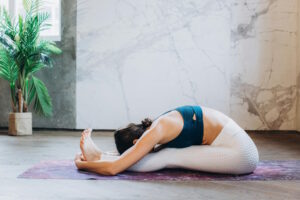
The history and origins of Pilates are a fascinating journey that intertwines the realms of fitness, rehabilitation, and holistic well-being. Understanding the origins of this popular exercise method can provide valuable insight into its development and evolution. In this exploration of the history and origins of Pilates, we’ll uncover the story behind this practice, its creator, and its primary purpose.
How Was Joseph Pilates and the History of Pilates?
Joseph Pilates, the visionary behind the Pilates method, was born in Germany in 1883. His journey into the world of physical fitness and wellness began as a child, as he battled various health ailments, including asthma, rickets, and rheumatic fever. Determined to overcome these challenges, Pilates immersed himself in the study of various physical disciplines, including yoga, gymnastics, and martial arts.
In 1912, Pilates relocated to England, where he worked as a self-defense instructor and a professional boxer. During World War I, he found himself interned in a British camp due to his German nationality. It was during this period that he developed and refined his method, originally known as “Contrology.” He used his internment as a unique opportunity to help fellow internees maintain their physical and mental well-being.
Upon his release, Joseph Pilates moved to the United States in the early 1920s, settling in New York City. There, he and his wife, Clara, opened a studio where they began teaching his method. It gained popularity among dancers, athletes, and individuals seeking a holistic approach to fitness and rehabilitation.
Who Actually Invented Pilates?
Joseph Pilates is widely recognized as the inventor of the Pilates method. While he drew inspiration from various fitness disciplines and forms of exercise, he developed a unique and comprehensive system that became known as Pilates or Contrology.
Pilates’ work was groundbreaking in its approach to physical fitness. He believed in the interconnectedness of the mind and body and emphasized the importance of core strength, flexibility, and controlled movements. His method was revolutionary for its time and continues to evolve and adapt to modern fitness needs.
What is Pilates Summary?
Pilates, initially referred to as Contrology by its creator, Joseph Pilates, is a mind-body exercise system designed to promote physical and mental well-being. It is characterized by a series of controlled, precise movements that target the core muscles while emphasizing proper alignment, breathing, and concentration. The primary goal of Pilates is to create a balanced and strong body capable of performing daily activities with ease.
Over the years, Pilates has gained widespread recognition and popularity, with variations and adaptations tailored to different fitness levels and goals. It is often used for rehabilitation, sports conditioning, and general fitness.
What is the Main Purpose of Pilates?
The main purpose of Pilates is to achieve holistic fitness and well-being by focusing on the following core principles:
1. Core Strength: Pilates places a strong emphasis on strengthening the core muscles, including the abdominals, lower back, and pelvic floor. A strong core provides stability, improves posture, and supports overall body strength.
2. Flexibility: Pilates incorporates stretching exercises that enhance flexibility and joint mobility, reducing the risk of injuries and promoting ease of movement.
3. Body Awareness: Pilates promotes mindfulness and body awareness. Practitioners learn to pay attention to proper alignment, breath control, and precision in movement.
4. Controlled Movements: Controlled and deliberate movements are a hallmark of Pilates. It encourages precise and purposeful motions to ensure that each exercise is performed with intention.
5. Breathing: Pilates emphasizes proper breathing techniques, which help oxygenate the body, promote relaxation, and enhance the mind-body connection.
In essence, the main purpose of Pilates is to create a balanced, strong, and flexible body while fostering mental clarity and overall well-being.
Summarizing the Answers
In summary, the history and origins of Pilates can be traced back to Joseph Pilates, a German-born visionary who developed the method as a means to overcome his own health challenges and promote holistic fitness. His method, initially called Contrology, focuses on core strength, flexibility, mindfulness, and controlled movements. The main purpose of Pilates is to create a strong and balanced body while enhancing mental and physical well-being. Pilates continues to evolve and adapt, offering a valuable approach to fitness and rehabilitation.